






In our work at the Maine Department of Agriculture, Conservation and Forestry (DACF), we are always eager to seize opportunities to get out from behind our desks and meet with farmers and other people who care about agriculture and in building a strong and abundant food system in our state. Visiting and meeting with people work ing hard at their businesses is the best place to listen and learn about their needs and concerns. During 2022, we talked with hundreds of agricultural business owners, their employees, industry stakeholders, and other community leaders, in addition to working with the United States Department of Agriculture (USDA), other states, and policymak ers to advocate for policies that work best for farmers. Here is just a glimpse of what that outreach looks like through photos taken and shared from the road.
and made maple sap an eligible commodi ty for critical economic relief payments.
vice, we also announced grant awards to improve the reach and resiliency of Maine's emergency food system. In addition to Under Secretary Jenny Lester Moffit, we were joined by Good Shepherd Food Bank President Kristen Miale, USDA FNS Re gional Administrator Lizbeth, and leaders from Maine’s emergency food system.
With Policy and Community Engagement Director Emily Horton, we joined the statewide Agricultural Council of Maine’s (AGCOM) Maine Harvest Tour. The time spent together allows stakeholders and policymakers to explore the complexity and diversity of the state’s agricultural landscape, learn about challenges facing our farmers and producers, and hear suc cess stories. Thank you to the tour direc tor, Senator James Dill and AGCOM Pres ident Julie Ann Smith for all your efforts in organizing this event.
resentative Bill Pluecker (I - Warren), and Project to End Hunger by 2030 facilitator
Craig Lapine, we gathered to learn more about the state’s roadmap to ending hun ger by 2030. VISTA plays an essential role in the implementation of the roadmap. We invite everyone to read “Everyone at the Table: Maine’s Plan to End Hunger by 2030” on our DACF website at maine.gov/ dacf/about/commissioners/endhunger.
It was an honor to meet with farm owners Joy and Tim Bueschen at Turning Page Farm in Monson, participants in DACF’s Maine Farms for the Future program. Turning Page Farm is a real model of in genuity, passion, and how to build a vi brant agricultural business in Maine. Consider their “Goat School,” which fo cuses on everything you need to know for a successful first year with goats. Farm owners curious to learn more about the program should visit maine.gov/dacf/ ard/business_and_market_development.

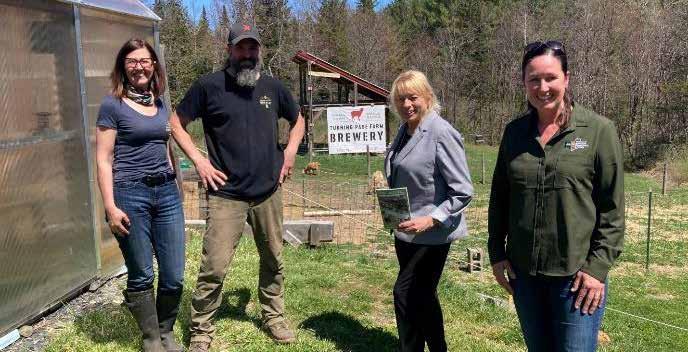
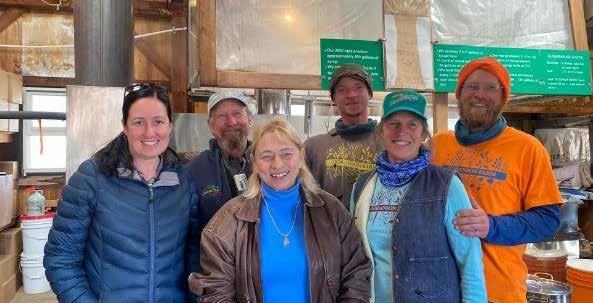
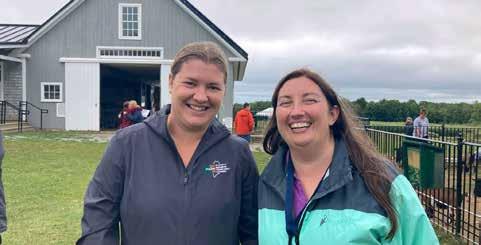
“You don't come to national service un less you're ready to take on big things.”
—Maine VISTA Leaders Val McNamara and Jake Hurner

With a group of Maine’s AmeriCorps VIS TAs (Volunteers In Service to America), national VISTA Director Meg Ansara, Rep

At Goranson Farm in Dresden with Gov ernor Mills, we sampled Goranson’s maple syrup and discussed some of the challeng es created by the pandemic, including supply chain disruptions. Other produc ers visited by Commissioner Beal includ ed Merrifield Farm and Dunn Family Maple. DACF led efforts to support Maine food and agriculture businesses that made infrastructure purchases or project in vestments to address supply chain disrup tions with up to $100,000 in reimburse ments. Governor Mills called upon the USDA to designate maple syrup as an eli gible Coronavirus Food Assistance Pro gram (CFAP) specialty crop. They agreed
In 2022 at Good Shepherd Food Bank in Auburn, we announced that Maine signed a Local Food Purchase Assistance Cooper ative Agreement with the United States Department of Agriculture (USDA) to ex pand marketing opportunities for histori cally marginalized agricultural producers and aggregators. Three strategic partners — Good Shepherd Food Bank, Cultivating Community, and Mi'kmaq Farms & Fish Hatchery — will purchase over $600,000 worth of agricultural products from no fewer than seven socially disadvantaged producers and aggregators. With the sup port of the USDA Food and Nutrition Ser
A mission of the DACF is to support and advocate for Maine agriculture and to pro mote farm products across the state, coun try and globe. Maine is committed to help ing farmers, suppliers and buyers use the Real Maine promotional program to reach new markets. This year alone, DACF’s Di rector of Natural Resource Markets and Economic Development, Claire Eaton, and Commissioner Beal traveled to the United Kingdom on a USDA Agricultural Trade Mission with Commissioners and Secretar ies of Agriculture and staff from 11 differ ent states. Agricultural Promotions Coor dinator Missy Jordan oversaw Maine’s participation at the Americas Food and Beverage trade show in Miami. Director Nancy McBrady represented Maine on the recent and first-ever agricultural trade mission to Madrid, Spain.
With dairy farmers, cheesemakers, and dairy industry leaders, each of whom added their unique flavors to this kick-off event. Through a special proclamation and events across Maine, Dairy Month was created to increase awareness of the
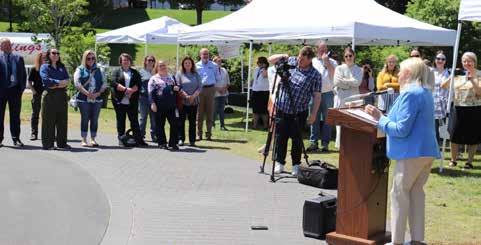

importance of choosing Maine milk, cheese, ice cream, and yogurt.
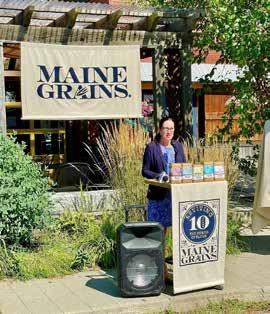
With Bureau of Agriculture, Food and Rural Resources Director Nancy McBrady and Policy and Community Engagement Direc tor Emily Horton, we attended the North eastern Association of State Departments of Agriculture (NEASDA) annual meeting in Hershey, PA. Planning and discussions fo cused on issues important to agriculture and the food supply chain. We look forward to hosting all of the northeastern state depart ments of agriculture for the NEASDA annu al meeting and spotlighting our excitement about agriculture in Maine in 2024.
Day. Stops included the Maine Water Buffalo Co. in Appleton, Brae Maple Farm, and Sweethaven Farm, both in Union. During the pandemic, buying di rectly from farms became more impor tant and frequent. Conversations with farmers indicate that this is not a trend. Direct sales remain high, and events like Open Farm Day creates more connec tions between farmers and people who value Maine-grown, raised, and made products.
that are then used by bakers and brew ers, was one of 64 successful applicants of our Agriculture Infrastructure Invest ment Program, where we awarded more than $19 million in grants to enhance food production and processing infra structure in our state.
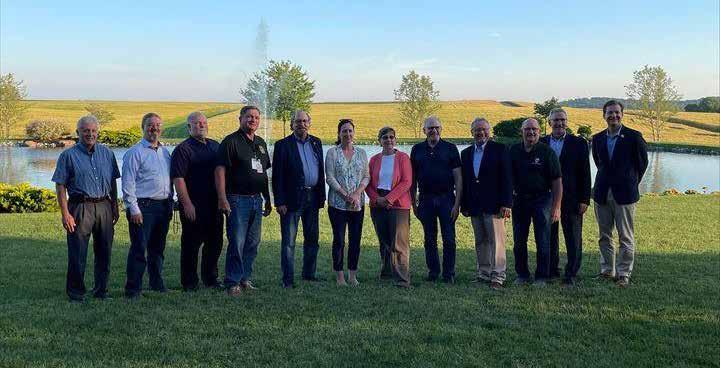


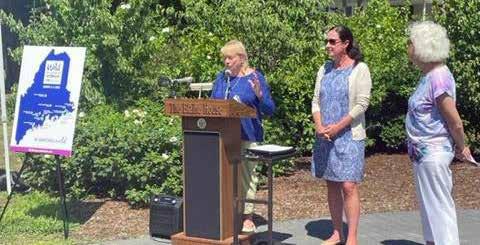
This visit to the Big E on Harvest New England Day was highlighted by my time with the Maine 4-H Foundation sheep and dairy goat 4H teams.


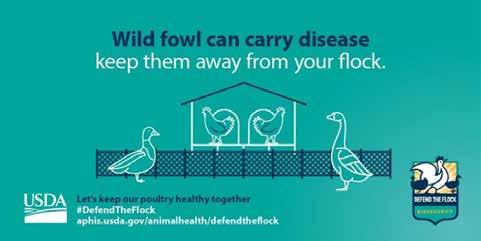
With DACF Maine Animal Health offi cials, we met with flock owners and event organizers across Maine to help slow and prevent the spread of Highly Pathogenic Avian Influenza (HPAI). In addition to inperson briefings, we published situation al reports for stakeholders to learn more and take steps to protect their birds.
The second annual Wild Blue berry Weekend
With Governor Mills, Director McBrady, a host of Maine wild blueberry farmers, food producers, and other special guests, we announced the second annual Wild Blueberry Weekend, an agri-tourism campaign designed to pro mote Maine's wild blueberry growers. During the event, we had a great time on the road celebrating with Brodis Blueber ries in Hope, Sennett's Wild Blueberries in Albion, Fields Fields Blueberries in Dres den, and Sweetgrass Farm Winery & Dis tillery in Union.
This visit to Skowhegan was to cele brate Maine Grains’ 10th anniversary, which included a preview of their expansion plans. Maine was once an important producer of grains in our country’s history until trends pri oritizing scale and uniformity over qual ity and flavor put our producers and pro cessors at a disadvantage. Today, owing to the vision and efforts of Amber Lambke and Maine Grains, we celebrate the rise of Maine’s grain economy from produc tion to processing.
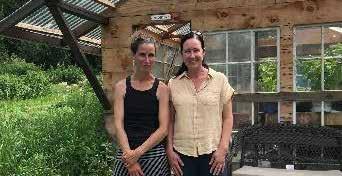
Our staff joined thousands across Maine in visiting some farms during Open Farm

With Governor Mills and CEI Senior Vice President of Food System Strate gies Gray Harris, we visited Joel Alex, Founder of Blue Ox Malthouse, and some of the Blue Ox Malthouse crew. Blue Ox Malthouse, which malts grains
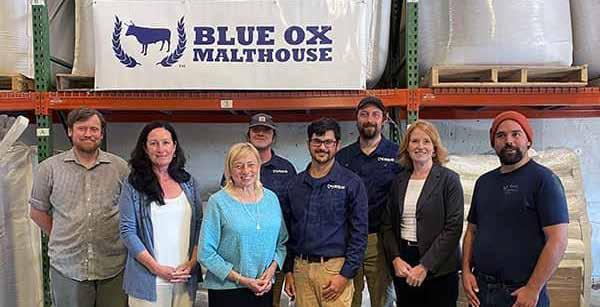
With Agriculture, Food and Rural Re sources Director Nancy McBrady and Policy and Community Engagement Di rector Emily Horton, we met with lead ers of state departments of agriculture to present a strong voice for Maine. During 2022-2023, I will serve as NASDA Board Secretary-Treasurer. I served as Food Systems and Nutrition Policy Committee Vice Chair with Secretary Ross from California (also pictured here) and as a Food Safety Steering Committee member for the past two years. I also serve as board president of Food Export Northeast.
USDA Secretary Vilsack visits Maine to hear firsthand about the impact of our expanded access to
Along with USDA Secretary Thomas Vil sack, Representative Chellie Pingree, and Governor Mills, Commissioner Beal vis ited with Gorham School District Super intendent Heather Perry, Middle School Principal Quinton Donahue, Dining Ser vices Director Michael Sanborn, and Al ternative Education Teacher and 2020 Maine Teacher of the Year Heather Whit taker, and Bumbleroot Organic Farm owner Ben Whalen, on a tour of the school and their extensive school garden. The Secretary’s visit to Maine to high light the state’s free school meal program came during National School Lunch Week. During the visit, Secretary Vilsack also announced $50 million in grants for schools to invest in new food service equipment that will allow them to con tinue serving nutritious meals.
 BY G CHERICHELLO Maine Senior FarmShare Program Manager
BY G CHERICHELLO Maine Senior FarmShare Program Manager
Liz and Ted Carter have been growing food and living at After the Rain Farm in Alexander, Maine for 40 years, long enough that “generations of Bambis have been trained” not to eat their acre of mixed vegetables, blueberries, and ornamentals.
I visited on a sunny day in early Sep tember, the time of year when summer and winter crops gloriously coincide. I watched as the Carters packed tomatoes, string beans, carrots, onions, and pota toes into paper bags, comprising their fourth and final Maine Senior FarmShare delivery for the season.
Alexander is in Washington County, about 35 miles from Machias and 15 miles from Canada. When the Carters first started farming, neither ticks nor squash bugs could be found there. These only started showing up in the last decade, harbingers of climate change. As retire
ment nears, the Carters are adjusting their business model as well as their pest management plan. They’ve stopped sell ing at regional farmers’ markets and began shifting their focus closer to home, connecting their produce with people fac ing food insecurity.
Enter Rhonda Oakes and Alexander Grange #304. Oakes met the Carters through their community involvement, most recently an effort to bring broadband internet to the area. Oakes is the secretary and cheerleader at Grange #304, and the partnership they forged brings fresh fruits and vegetables to older adults in Alexan der and Cooper. While many Grange chap ters have dissolved or lost significant membership, Grange #304 – organized in 1889 – is experiencing membership growth, a testament to its community focus and dedication. They hold regular events for all ages, like summer camp, wreath-mak ing, and hunters’ safety.
Many Maine Senior Farm Share participants are re minded of the farms and gar dens they tended with family growing up. One shared a memory of their grandfather, who would grow and store barrels full of potatoes, car rots, and turnips in their cel lar. When one recipient was asked how he likes to eat the cherry tomatoes included in the share, he said, “I take them in my hand and eat them.” Another, who used to be an active member of the Grange herself, told me, “I belonged to everything.” Now her peri odic visit from Oakes connects her with a friendly face and the freshest harvest around: “I never liked yellow beans before, but now I think I like them more than green.”
Farms and community organizations across Maine are encouraged to work together to bring Maine Senior Farm Share to their neighbors. To find out more and discuss possibilities, email SeniorFarmShare.AGR@maine.gov.
What happens in beehives as the tem peratures get colder? We asked Jason Peters of Real Maine member Maine Bee Company in Bucksport about wintertime at apiaries.
Do bees hibernate? How do they rest and survive in the winter?
Honeybees cluster during the winter months. When temperatures drop to around 60 degrees, the workers form a cluster around the queen. As the tempera ture drops, the cluster becomes more compact, which keeps the center (core) of the cluster warmer. Bees continually ro tate from the outside of the cluster toward the inside and will vibrate their wing muscles to generate heat.
What do beekeepers do differently in the winter to take care of hives?

There is a lot of variation with regard to how beekeepers prepare their bees for the winter months. Having a strong popula tion of healthy bees that are free of pests and disease and have ample stores of honey for the winter are all key to colony
survival. Many beekeepers will wrap their hives with some sort of insulation to help the bees during those cold winter months.
Can beekeepers harvest honey in the winter?
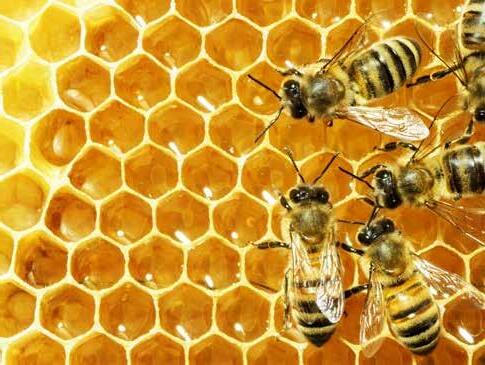
Beekeepers in our area typically harvest honey twice during the year. The spring crop is lighter in color and has a milder flavor, making it more desirable. The fall crop is generally darker and has a more robust flavor. Some late season honeys are also more prone to crystallization.
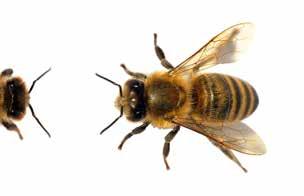
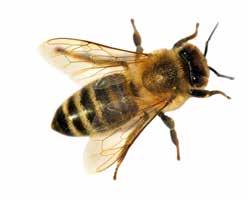
What would a beekeeper consider a successful winter for their hives?
Wintering success is dependent on many fac tors. We are happy if we have
less than 10 percent losses in our opera tion during the winter months. We gener ally find that if our colonies are healthy and robust heading into winter, they often come out of winter looking great.
Maine Bee Company in Bucksport is an apiary focused on the production of locally acclimated, winter hardy queens and northern nucleus colonies. It produces local artisan honey and uses their hives to produce hand-crafted items in small batch es, such as lip balms, hand creams, soaps, candles, and tinctures.
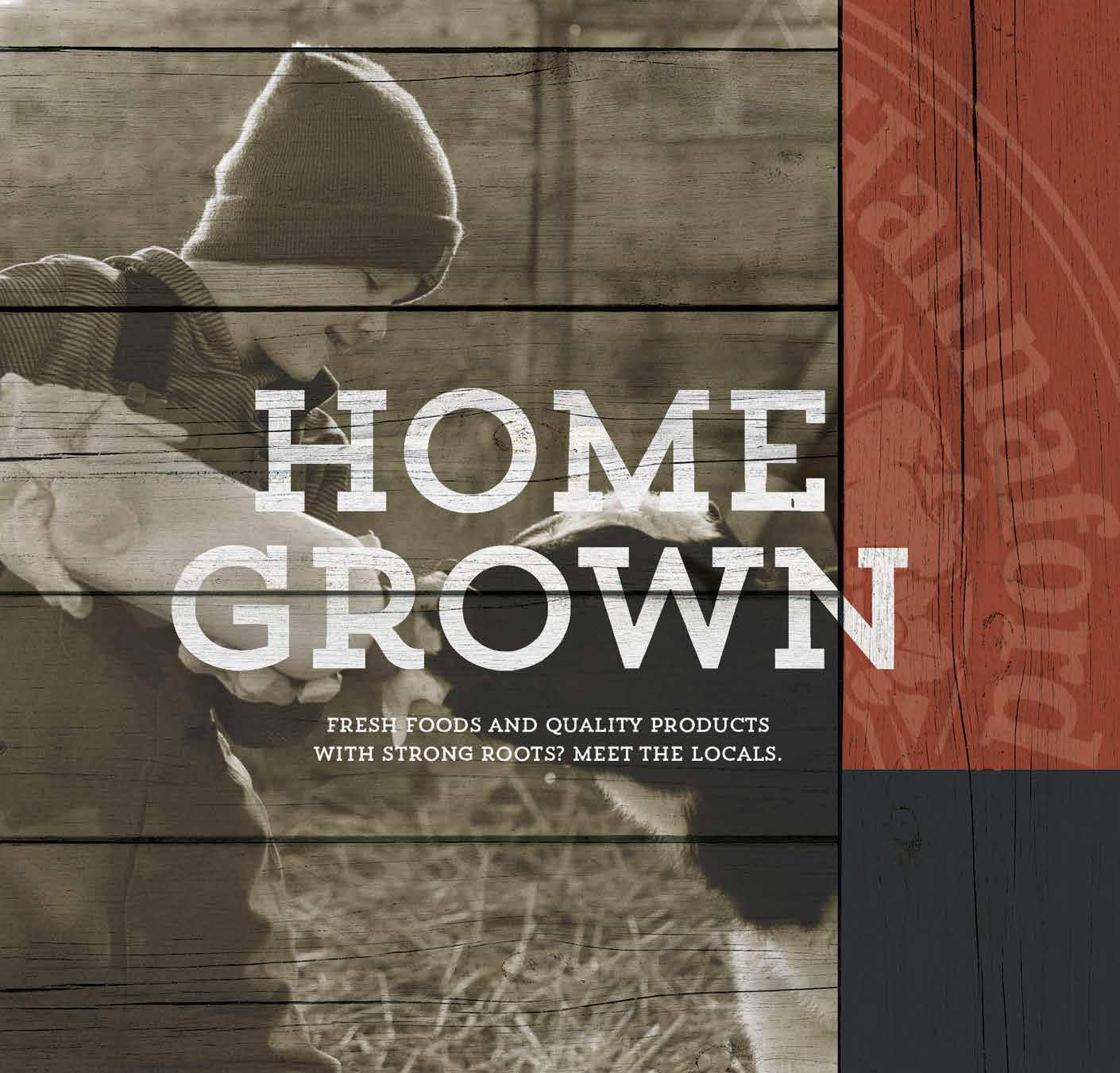

Augusta Winter Farmers’ Market 22 Armory St., Augusta Open every Tuesday, 3pm-5pm, November-April
Bangor Winter Farmers’ Market Abbott Square, Across from the Bangor Public Library, Bangor Open 1st and 3rd Sunday of each month, Dec-Apr, 11am-1pm
European Market in Bangor 117 Buck St, Bangor
Open every Saturday, 8:30am-12:30pm, year-round. Open Fridays before Christmas and New Year’s.
Bath Farmers’ Market 27 Commercial St, Bath Open every Saturday, 9am-Noon, November-April. Holiday markets on Christmas Eve and New Year’s Eve!

Belfast Farmers’ Market 231 Northport Ave, Belfast Open every Friday, 9am-1pm, Nov-March
Berwick Winter Farmers’ Market 11 Sullivan St., Berwick 2nd Sunday of the month, 10am to 1:30pm, December through April
Blue Hill Winter Farmers’ Market at the Grange 1157 Pleasant St., Halcyon Grange Hall, Blue Hill Open every Saturday, 9:30am-12:00pm in November
Bowdoinham Holiday Markets 13 School St., Bowdoinham
Holiday market Dec. 17 at Bowdoinham Town Hall. 8:30am to 12pm. Check FB page for details.
Bridgton Winter Farmers’ Market 166 Harrison St., Bridgton Open every Saturday, 9am-noon, Nov-April
Brunswick Winter Market 14 Main St. (Fort Andross Building), Brunswick Open every Saturday, 9am-12:30pm, Nov-Apr
Caribou Winter Market 1353 Presque Isle Rd., Caribou Holiday market is open December 18, 9-1pm
Dover Cove Winter Farmers Market Piscataquis County Ice Arena, 1049 W Main St., Dover-Foxcroft Open every other week, starting the weekend before Thanksgiving
Farmington Winter Farmers’ Market 130 Quebec St., Farmington Open every Saturday, 10am-1pm, November-April
Greater Gorham Winter Farmers’ Market 75 South St, Gorham Open 1st and 3rd Saturdays, 9am-1pm, Nov-April
Greenwood Winter Farmers’ Market 270 Main St. (Route 26), Greenwood Open every other Friday, 4pm-6pm, November-April
Hampden Winter Farmers’ Market 55 Main Road North, Hampden Open every Friday, 2-5:30pm, November-May
Lewiston Winter Farmers’ Market Bates Mill 5, 2 Oxford St., Lewiston
Orono Winter Farmers’ Market 6 Goodridge Dr., Orono
Online pre-ordering available for pick-up at St. Mary’s Nutrition Center. SNAP/EBT accepted. (Contact: Sherie at (207) 513-3848, lewistonfarmersmarket@gmail.com.) For more information, check the market’s Facebook page.
Every Saturday, 9am-noon in December. January-April, 2nd & 4th Saturdays, 9am-Noon. Visit www.oronofarmersmarket.org.
Portland Winter Farmers’ Market 631 Stevens Ave., Portland Open every Saturday, 9am-1pm, Dec-Apr
Rockport Farmers’ Market 310 Commercial Street, in the greenhouse, Rockport Open every Saturday, 9am-12pm, year-round!
Skowhegan Winter Farmers’ Market 144 Madison Ave., Skowhegan Open 1st and 3rd Saturdays of the month, 10am-1pm, Dec-March
South Portland Winter Farmers’ Market 496 Ocean St., South Portland Open every Sunday, 10am-2pm, Nov-Apr
Tri-Town Farmers’ Market 197 Main St., So Berwick
Specific Market dates: 12/18, 1/15/23, 2/5/23, 2/19/23, 3/5/23, 3/19/23, 4/2/23
United Farmers’ Market of Maine 18 Spring St, Belfast Open every Saturday, 9am-2pm, year-round
Farmers Market at Pumpkin Vine Family Farm
Downtown Waterville Farmers’ Market
217 Hewett Rd, Somerville
Pre-order only. Pick-up 2nd & 4th Tuesday of the month from 4-8pm. For info email: info@pumpkinvinefamilyfarm.com.
150 Maine St., Waterville Every Thursday, 2-5pm at Chace Forum
YIELD: 7 SERVINGS

INGREDIENTS
2 cups cooked quinoa
2 cups black beans, drained and rinsed
2 cups winter squash, peeled, diced, cooked, and cooled
½ tsp chipotle chili powder
½ tsp ground cumin
½ tsp salt
½ tsp dried oregano
7 whole grain hamburger buns Cheese, tomato, and lettuce
DIRECTIONS
1. Mix all ingredients in a large mixer until well combined. Season to taste.
2. Preheat oven to 400°F. Line sheet pan with parchment paper.
3. Scoop burger mix with ½ cup measuring cup and form into pat ties. Lay in a single layer on a sheet pan and bake for 20 minutes.
4. Assemble burgers with cheese, tomato, and lettuce, if desired.
From Windham Raymond School District

YIELD: 6 SERVINGS
INGREDIENTS
8 oz parsnip, peeled

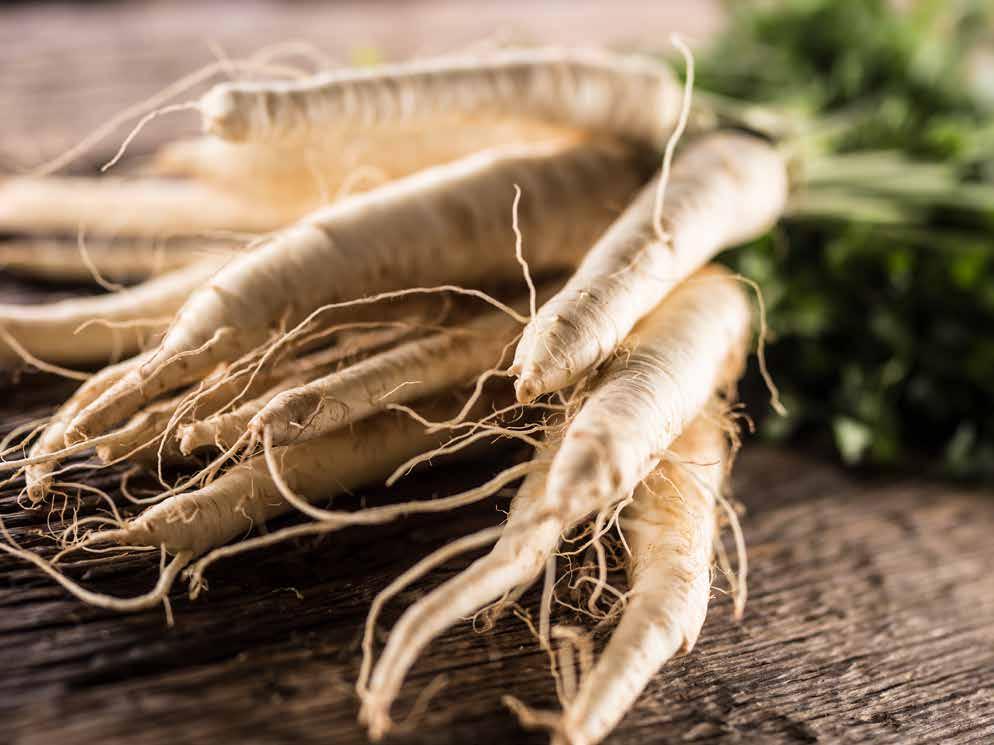
½ cup all-purpose flour

½ cup whole-wheat flour
½ Tbsp baking powder

1 tsp sugar
¼ tsp cinnamon

Pinch of nutmeg
¼ tsp salt
4 tbsp unsalted butter, cut into chunks
¼ cup buttermilk
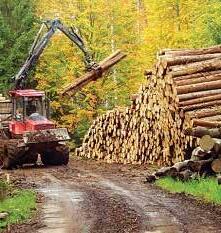
1. Cut the parsnip into chunks and cook either by boiling or steaming until tender, around 10 minutes. Mash up the parsnip with a fork.

2. Preheat oven to 400F.
3. If using food processor — pulse together flour, baking powder, sugar, cinnamon, nut meg, and salt. Add butter and pulse until you have fine breadcrumb texture. Add the buttermilk and parsnip puree and pulse a few times until combined, but don't overmix.
4. If making by hand — mix together dry ingredients, then rub in butter. Add buttermilk and parsnip puree and mix until combined, being careful not to overmix.
5. In both cases, tip the mixture onto a floured surface and pat out dough with floured hands, fold over, and pat out again for a layer around ¾" thick.
6. Cut out circles with a cutter or glass, trying not to twist as you cut, and place the cir cles on a greased baking sheet/tray.
7. Bake for 12-15 minutes until risen and lightly brown.
From RSU 54’s 2021 Farm to School Cook-Off team, Team SonDay
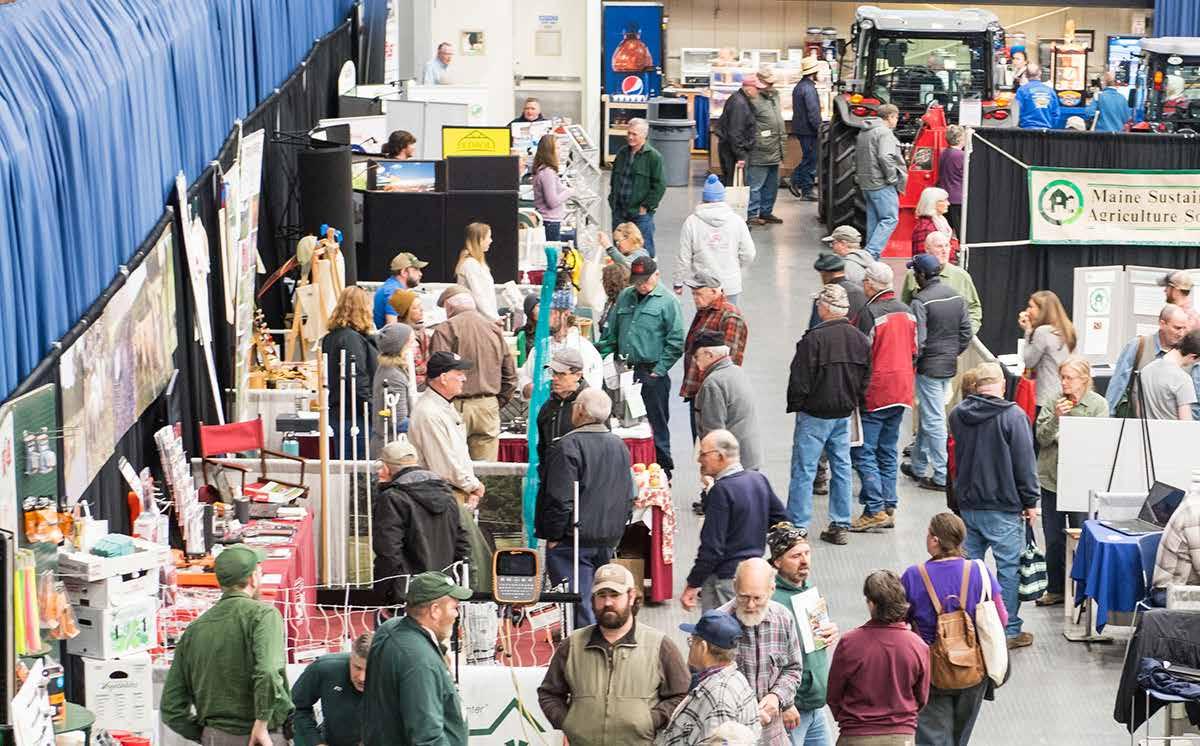
The State of Maine Agricultural Trades Show is sponsored by the Maine Department of Agriculture, Conservation and Forestry. It typically takes place every January and is a place for farm, agricul tural and related sectors to network and connect around business needs and trends. Producers and consumers alike visit this three-day show to get professional expertise, learn about technologies, and to gather information on the agriculture industry.
The event offers opportunities for agricultural service providers and organizations to exhibit equipment, supplies, and resources on the trade show floor. The show also features conference presentations on current topics, research and business models, certification courses, and meet ings focused on agriculture, natural resource management and food systems.

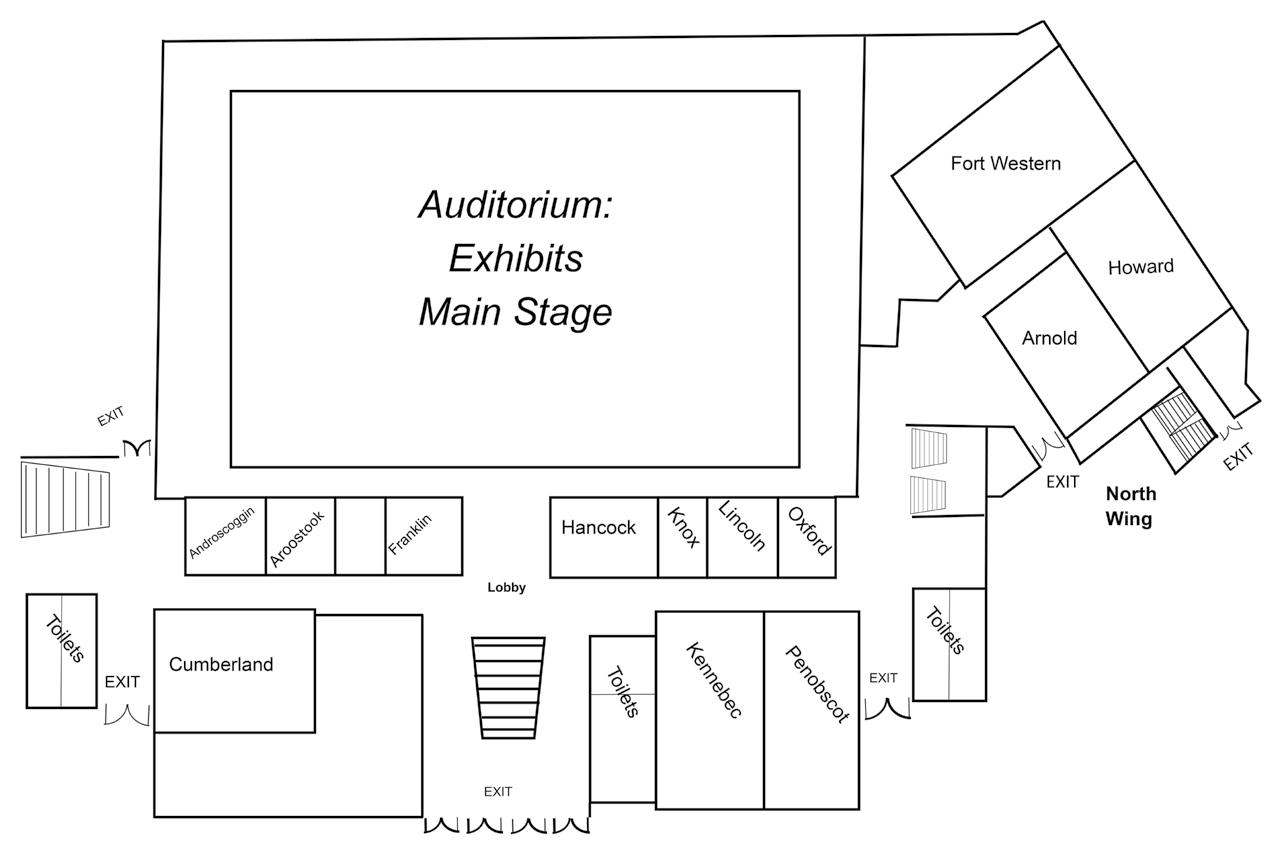

USDA – Part of the United States Government, the U.S. Department of Agriculture is the nation’s largest natural resource agency. Some primary areas of work include:
• Food security and safety
• Forest management
• Funding for farms
• Research centers
• Data collection and agricultural statistics
• Marketing
• Disaster support
• State offices
• Programs to support rural communities and businesses
MDACF and BAFRR – Maine Department of Agriculture Conservation and Forestry is the state’s largest natural resource agency. The Bureau of Agriculture, Food & Rural Resources is the primary state-level entity to support Maine’s agricultural, food and rural resources infrastructure.
• Food security and safety
• Funding for farms
• Data collection
• Promoting Maine farms, farm products and supporting agricultural awareness
• Animal care, disease tracking, and risk management
• Programs to support rural communities and businesses
• Disaster support
• Education and outreach
Q. I’m a shopper who wants to buy local. Where should I go?
A. Visit www.RealMaine.com. Search a directory of farms, markets, and businesses for everything from fruit, vegetables, meats, eggs and dairy, Christmas trees, plants, flowers, fibers, specialty foods, and craft beverages.
Q. I’m a farmer who seeks help with business planning. Where should I go?
A. To start, you can reach out to the USDA, SCORE Maine, the Agricultural Re sources Development Division at the Maine Department of Agriculture, or the SBA (Small Business Administration). Schedule a meeting with an advisor.
Q. I’m curious about agriculture and learning for youth.
A. Visit a Cooperative Extension county office, local 4-H, or Maine Ag in the Classroom. On-demand digital learning is available. You can join or volunteer for local 4-H programs.
Q. I need help starting a food business and marketing my products.
A. Help is available from Maine DACF, the Division of Quality Assurance and Regu lations, as well as UMaine Cooperative Extension food science staff. SCORE Maine can also help, along with Maine DECD and Real Maine.
Q. I want to talk with other farmers to network and share ideas.
A. Producer associations, mentorship programs, and instructional courses can help. Visit the Maine Agricultural Trades Show in January!
Q. I’m a hobby gardener in need of help planning and sourcing native plants.
A. Contact the University of Maine Cooperative Extension for planning help. Visit RealMaine.com to find a local garden center to assist with finding native plants and seeds.
Three farms are part of the inaugural Working Farmland Access Protection Program, part of the Land for Maine’s Future funding.
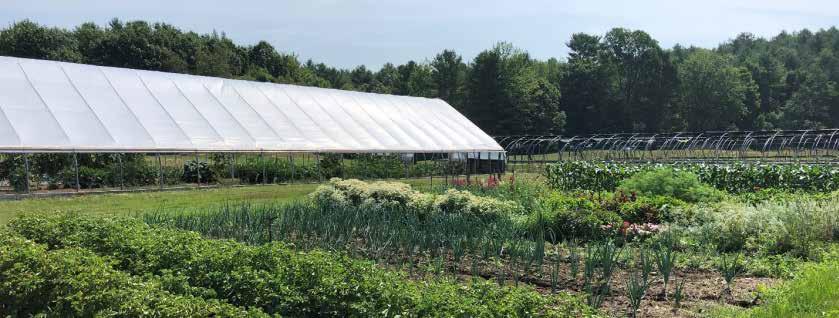
E & E Farm (Lisbon) — A 274-acre property just outside of Lisbon Falls, ME, with 119 acres of open space and 154 acres of forest, the land at E&E is well situated for a variety of cattle and dairy enterprises. It has been home to a dairy herd and heifer operation in the Smith Family at different points in its 100+ year history. With the farm’s prox imity to the Brunswick, Lewiston/Auburn, and Greater Portland metropolitan areas, development pressure in the area is strong.
Roseberry Farm (Richmond) — One of the larger contiguous tracts of dairyland still under active management in the area at over 1,000 acres, Roseberry Farm pro
vides a unique opportunity for a livestockbased business to thrive in the future.
New Leaf Farm (Durham) A 74-acre farm that has been home to one of Maine’s pioneer organic vegetable operations, this easement will enable the current owners to work on a succession plan. De velopment pressure has led to the conver sion of significant amounts of open space in the area. The New Leaf property is ad jacent to 340 acres of conservation land surrounding Runaround Pond and is only a few miles from several other thriving agricultural operations.
“It’s an exciting day to be moving three farm projects forward based on the due dili gence and recommendations of LMF’s Work ing Farmland Access Protection Program committee,” said Commissioner of the
Maine Department of Agriculture, Conser vation and Forestry Amanda Beal. “These farms are all located in areas of the state ex periencing growing development pressure. Likewise, having the opportunity to protect such significant working forests and recre ational lands will continue to benefit our state and local communities in numerous ways now and for generations to come.”
The Land for Maine’s Future Program is
the State of Maine’s primary method of conserving land for its natural and recre ational value. The program was estab lished in 1987 when Maine citizens ap proved a $35 million bond to fund the pur chase of land and easements. The pro gram’s priority is to conserve the Maine landscape, recognizing that working lands and public access to these lands are criti cal to preserving Maine’s quality of life.









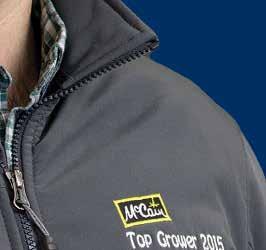
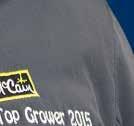














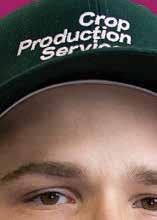











































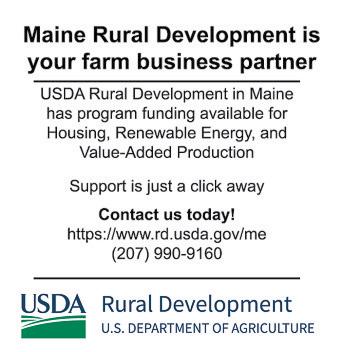
Maine’s
16 Soil and Water Conservation Districts focus on land and water stew ardship practices and resources at the com munity and state levels.
How do local communities benefit from Maine’s Soil and Water Conservation Districts?
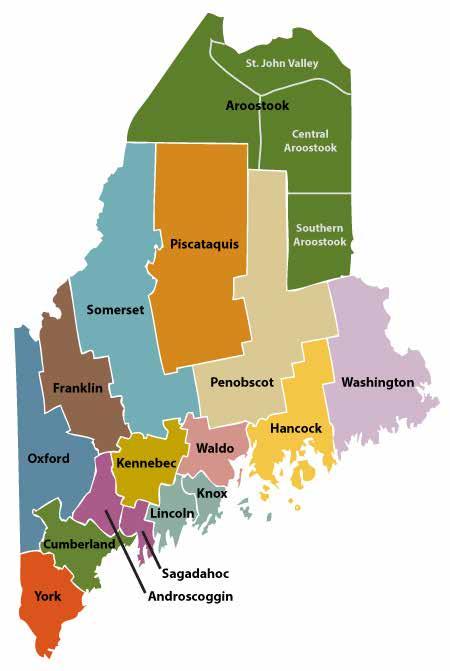
• Attend public workshops, demonstra tions, educational programs
• Obtain one-on-one help to answer ques tions about soil and water health
• Learn best practices to support Maine’s natural resources
• Volunteer with programs, such as Envi rothon, a youth educational program building skills and awareness around Maine’s support of natural resources
Androscoggin Valley (Androscoggin & Sagadahoc Counties)
Central Aroostook
Cumberland County
254 Goddard Road, Lewiston www.androscogginswcd.org
735 Main St, Suite 3, Presque Isle www.facebook.com/CASWCD
35 Main Street, Suite 3, Windham www.cumberlandswcd.org
Franklin County 107 Park Street Farmington, ME 04938 www.facebook.com/ FCSWCD207-778-4279
Hancock County
Kennebec County
Knox-Lincoln (Knox and Lincoln Counties)
Oxford County
192 Main St., Ste 11, Ellsworth www.hancockcountyswcd.org
50 Hospital Street, Augusta www.kcswcd.org
893 West St, Suite 103, Rockport www.knox-lincoln.org
17 Olson Road, Ste 3, South Paris www.oxfordcountyswcd.org
Tel. 207-753-9400 ext. 3 Fax 207-783-4101 districtmanager@androscogginswcd.org
Tel. 207-764-4153 Fax: 207-768-3407
Tel. 207-892-4700 Fax: 207-892-4773 betty-mcinnes@cumberlandswcd.org
Tel. 207-778-4279 Fax: 207-778-5785 info@franklincswcd.org
Tel. 207-667-8663 Fax: 207-667-3585 info@hancockcountyswcd.org
Tel. 207-621-9000 Fax: 207-626-8196 dale@kcswcd.org
Tel. 207-596-2040 info@knox-lincoln.org
Tel.207-743-5789 Fax: 207-743-6256 oxfordcountyswcd@gmail.com
1423 Broadway, Suite 2, Bangor www.penobscotswcd.org
42 Engdahl Drive, Dover-Foxcroft www.piscataquisswcd.org
139 Market St, Ste 106, Fort Kent www.sjv.me.nacdnet.org
Somerset County
Southern Aroostook
70 East Madison, Skowhegan www.somersetswcd.org
304 North Street, Houlton www.saswcd.org
46 Little River Drive, Belfast www.waldocountysoilandwater.org
Tel. 207-990-3676 ext. 3 Fax: 207-942-1782 info@penobscotswcd.org
Tel. 207-564-2321 ext. 3 Fax: 207-564-2570 info@piscataquisswcd.org
Tel. 207-834-3311 Fax: 207-834-6435 sjvswcd@gmail.com
Tel. 207-474-8324 ext. 3 Fax: 207-474-0638 info@somersetswcd.org
Tel. 207-532-9407 ext. 3 Fax: 207-532-4379 angela.wotton@me.nacdnet.net
Tel. 207-218-5311 Fax: 207-338-4972 jenny.jurdak@me.nacdnet.net
Washington County
51 Court Street, Machias
21 Bradeen St, Ste 104, Springvale www.yorkswcd.org
Tel. 207-255-4659 Fax: 207-255-0936 nate.pennell@myfairpoint.net
Tel. 207-324-0888 ext. 214 Fax: 207-324-4822 info@yorkswcd.org
 By Real Maine
By Real Maine
RealMaine visited Capital Area Techni cal Center (CATC) in Augusta on Nov. 29 for a local foods cooking challenge for culinary arts students. CATC is one of sev eral culinary arts programs that hosted similar cooking challenges this fall as part of the University of Maine’s Building Agri culture Literacy Through an Immersive Culinary Experience project.
Chef Rob Dumas, food science innova tion coordinator for the School of Food and Agriculture at the University of Maine, was on hand to help CATC Chefs Heidi Parent and Patrick Austin educate students about using local ingredients.
Kathy Savoie, University of Maine exten sion educator, highlighted common food allergies and diet restrictions before the cooking challenge.
Chef Dumas brought a pantry full of Maine ingredients for students to use in their dishes, which included many Real
Maine member products. The students were then divided into groups to formulate dishes — with the added twist of drawing a dietary restriction for their dish such as vegan, gluten-free, pescetarian, and lactoovo vegetarian. Students then had 50 min utes to cook and plate dishes for tasting.
The University of Maine’s Building Ag riculture Literacy Through an Immersive Culinary Experience project activities are funded by the USDA’s Agriculture and Food Research Initiative (AFRI) for three years. In partnership with Maine Agricul ture in the Classroom, the program takes a multi-pronged approach to increasing ca reer and technical education culinary arts instructors’ understanding, engagement, and passion for the agricultural landscape and food system in Maine. The scope of grant activities include:
• visits to culinary arts classrooms to provide lessons about seasonality, di etary preferences, and allergens, and
facilitate local foods cook ing challenges

• a multi-day, all-expensespaid bus tour of Maine’s food system for culinary arts instructors, featur ing cooking and tasting activities, along with culi nary challenges with Maine ingredients
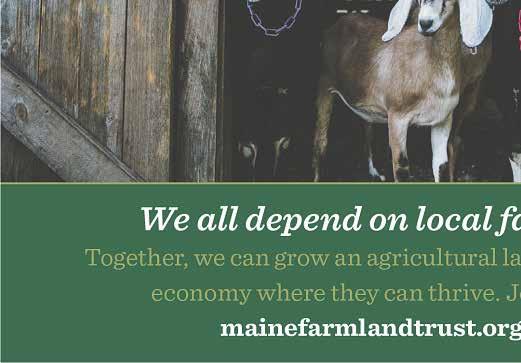

• a local foods cooking com petition held at UMaine for culinary arts students from throughout the state in the spring
• opportunities to apply for grant fund ing for culinary arts programs to use to support connections to the Maine food system

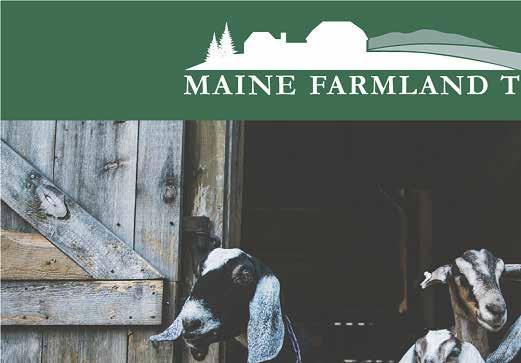
Dumas and Savoie will visit 31 culi nary arts classes at 16 career and techni cal education programs throughout Maine this fall. They said they have had
many worthwhile takeaways from their interactions with culinary arts classes.
“It’s been a joy to get to expose young people to Maine foods and see students put their creative spin on it,” Dumas said.
“We have a bright future in getting local foods in local food establishments,” Savoie said.



